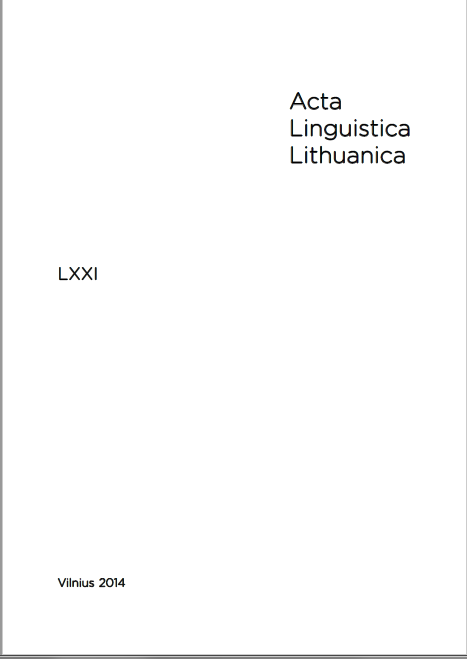Vakarų aukštaičių kauniškių dvigarsiai: kiekybės santykiai
The Diphthongs of West Highlanders in Kaunas Area: Quantitative Ratio
Author(s): Rima BakšienėSubject(s): Theoretical Linguistics, Phonetics / Phonology, Baltic Languages
Published by: Lietuvių Kalbos Institutas
Keywords: dialectology; Lithuanian dialects; semi-diphthong; syllable accent; quantitative feature;
Summary/Abstract: The article analyses the quantity of semi-diphthongs in three subdialects of West highlanders in Kaunas area (hereinafter referred to as VAK ) namely: Marijampolė, Vilkaviškis and Šakiai. The researched subdialects feature various syllable accent allotones: Marijampolė subdialect elongates the first components of acute accents with i and u; Šakiai subdialect possesses the so called continuous accent, meanwhile Vilkaviškis subdialect has none of the aforementioned features thus the prosodic composition of diphthong syllables is closest to the standard language. The article also discusses the the interpretation of VAK diphthongs quantity and marking in Lithuanian tradition of dialectology. The research results showed that the longest diphthongs are the acute diphthongs containing a and e and it is typical to all subdialects. They are substantially longer in Marijampolė and Vilkaviškis subdialects than circumflex variants; meanwhile in Šakiai subdialect this difference in length is not so sharp. The common length of diphthongs with i and u is shorter. The difference between the acute and circumflex diphthongs of this group is very slight. The length of the first component of diphthongs with a and e is an important accent feature in Marijampolė and Vilkaviškis subdialects. The duration of the first component in Šakiai subdialect is not considered as a crucial feature of accent. It is related to the existing continuous accent prevailing in the subdialect. In the group of diphthongs with i and u the duration of the first component clearly distinguishes accents only in Marijampolė subdialect, meanwhile in Vilkaviškis and Šakiai subdialects this feature loses importance.
Journal: Acta Linguistica Lithuanica
- Issue Year: 2014
- Issue No: 71
- Page Range: 193-214
- Page Count: 22
- Language: Lithuanian

